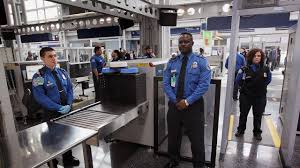Security analysts say the United States is now scaling back on rigid “security theatre” introduced after 9/11. Nation-wide discussions are underway to prioritize risk-based screening and reduce blanket restrictions that have long frustrated travelers and businesses.
TSA Adopts Risk‑Based Approach to Passenger Screening
The Transportation Security Administration (TSA) is shifting from universal measures like removing shoes and laptops to targeted, intelligence-backed screening, focusing resources on higher‑risk passengers, while easing rules for pre‑vetted travelers under programs like TSA PreCheck.
Technology Integration Reduces Manual Security Checks
Airports across America are rolling out advanced tech such as computed tomography (CT) scanners, biometric verification, and AI‑enabled behavior analysis systems. These innovations aim to improve detection accuracy and reduce traveler inconvenience.
Experts Advocate Balance Between Security and Convenience
Security specialists emphasize that a smarter, less invasive approach builds public trust and travel efficiency without increasing risk. By aligning security with actual threat levels, the system aims to become both safer and more user‑friendly.
Some Restrictions Remain as Security Standards Evolve
While reforms are advancing, some high‑risk protocols like liquid limits on international flights and reinforced cockpit doors remain unchanged. Thought leaders note that these legacy measures are unlikely to be phased out soon.
Industry Stakeholders Call for Broader Modernization
Airlines and airport operators are urging policymakers to modernize rules across the board, including TSA checkpoint procedures, No‑Fly and Selectee lists, and intelligence-sharing frameworks. Their goal: a coherent, nationwide security overhaul.
Global Counterparts Embrace Similar Security Reforms
International partners such as Canada, the EU, and Australia are also adopting risk‑based screening, demonstrating a global trend toward evolving airport security strategies. The US aims to align with these standards and enhance cross-border interoperability.
Next Phase: Legislative and Funding Support Needed
To implement these changes, reformers are calling on Congress and the executive branch to allocate funding for technology upgrades, adjust legal frameworks for risk-based policies, and uphold civil liberties in the process.
Conclusion: US Security Culture Undergoing Realignment
The U.S. is entering a pivotal phase in homeland security policy moving beyond post‑9/11 rituals toward data-driven, traveler‑friendly models. If managed correctly, this transition could redefine airport security for a new generation of global travel.



Comments (0)
No comments yet. Be the first to comment!
Leave a Comment